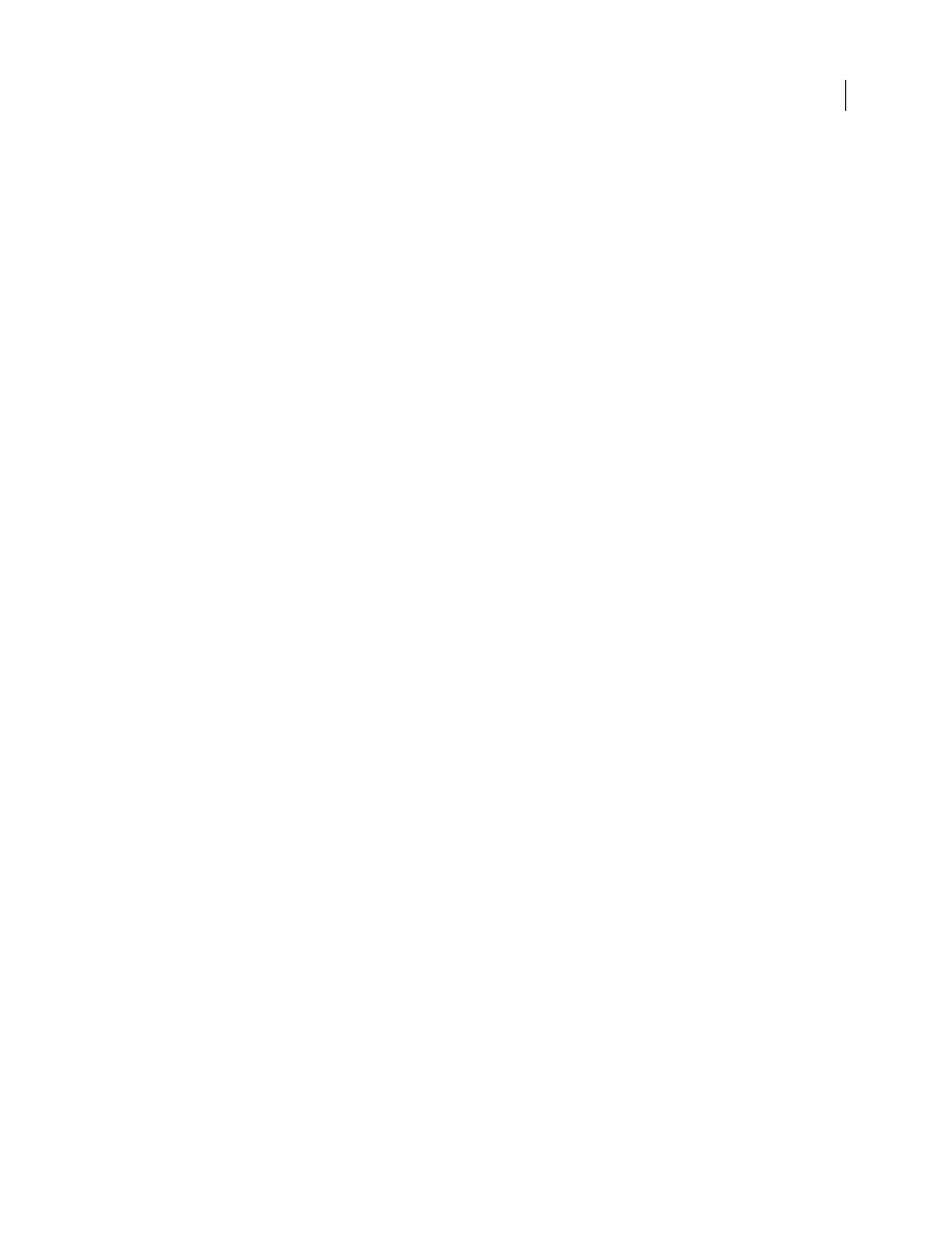Copying and pasting content into golive – Adobe InDesign CS3 User Manual
Page 116

INDESIGN CS3
User Guide
109
Images options
The Images section of the XHTML / Digital Editions Export Options dialog box includes the following options.
From the Copy Images menu, determine how images are exported to HTML.
Original
Exports the original image to the eBook. When this option is selected, all other options are dimmed.
Optimized
Lets you change settings to determine how the image is exported.
•
Formatted
Preserves InDesign formatting, such as rotation or scale, as much as possible for web images.
•
Image Conversion
Lets you choose whether the optimized images in your document are converted to GIF or
JPEG. Choose Automatic to let InDesign decide which format to use in each instance.
•
GIF Options (Palette)
Lets you control how InDesign handles colors when optimizing GIF files. The GIF format
uses a limited color palette, which cannot exceed 256 colors.
Choose Adaptive to create a palette using a representative sample of colors in the graphic without any dithering
(mixing of small spots of colors to simulate additional colors). Choose Web to create a palette of Web-safe colors that
are a subset of Windows and Mac OS system colors. Choose System (Win) or System (Mac) to create a palette using
the built-in system color palette. This choice may cause unexpected results.
•
JPEG Options (Image Quality)
Determines the trade-off between compression (for smaller file sizes) and image
quality for each JPEG image created. Low produces the smallest file and lowest image quality.
•
JPEG Options (Format Method)
Determines how quickly JPEG graphics display when the file containing the
image is opened on the Web. Choose Progressive to make the JPEG images display gradually and in increasing detail
as they are downloaded. (Files created with this option are slightly larger and require more RAM for viewing.)
Choose Baseline to make each JPEG file display only after it has been completely downloaded; a placeholder appears
in its place until the file displays.
Copying and pasting content into GoLive
Copying content from InDesign is a quick way to get formatted text, tables, and graphics into Adobe GoLive®.
Formatting is preserved as much as possible. For a more systematic approach to repurpose content for GoLive,
export to XHTML or use an XML workflow.
After you copy contents in InDesign, GoLive supports three Paste Special options: Plain Text, Empty CSS rules (style
names are mapped, but no attributes are included), and Images (any visible InDesign content as WebSave image).
When copying and pasting, note the following:
Paragraph and character styles
Paragraph and characters styles are converted as much as possible in GoLive.
Converted fonts are restricted to basic fonts available in Windows and Mac OS. Attributes not preserved in GoLive
include baseline shift, ligatures, tracking, kerning, paragraph rules, justification, hyphenation, no-break settings,
Keep options, and tab positions.
Graphics
When you use Paste Special in GoLive to paste copied InDesign graphics, the graphic file is saved in a web-
safe format. Simple transformations (such as scaling or rotation) that you’ve applied to imported graphics in
InDesign are also preserved, so you don’t have to re-create these effects in GoLive.
Tables
Tables are exported in basic format, with minimal formatting. Header and footer rows are exported as normal
rows, table styles aren’t mapped to specific formatting, and cell merges aren’t recognized.
You can also use the File Place import option in GoLive to add content. For more information on using InDesign
content in GoLive, see the Adobe GoLive documentation.
